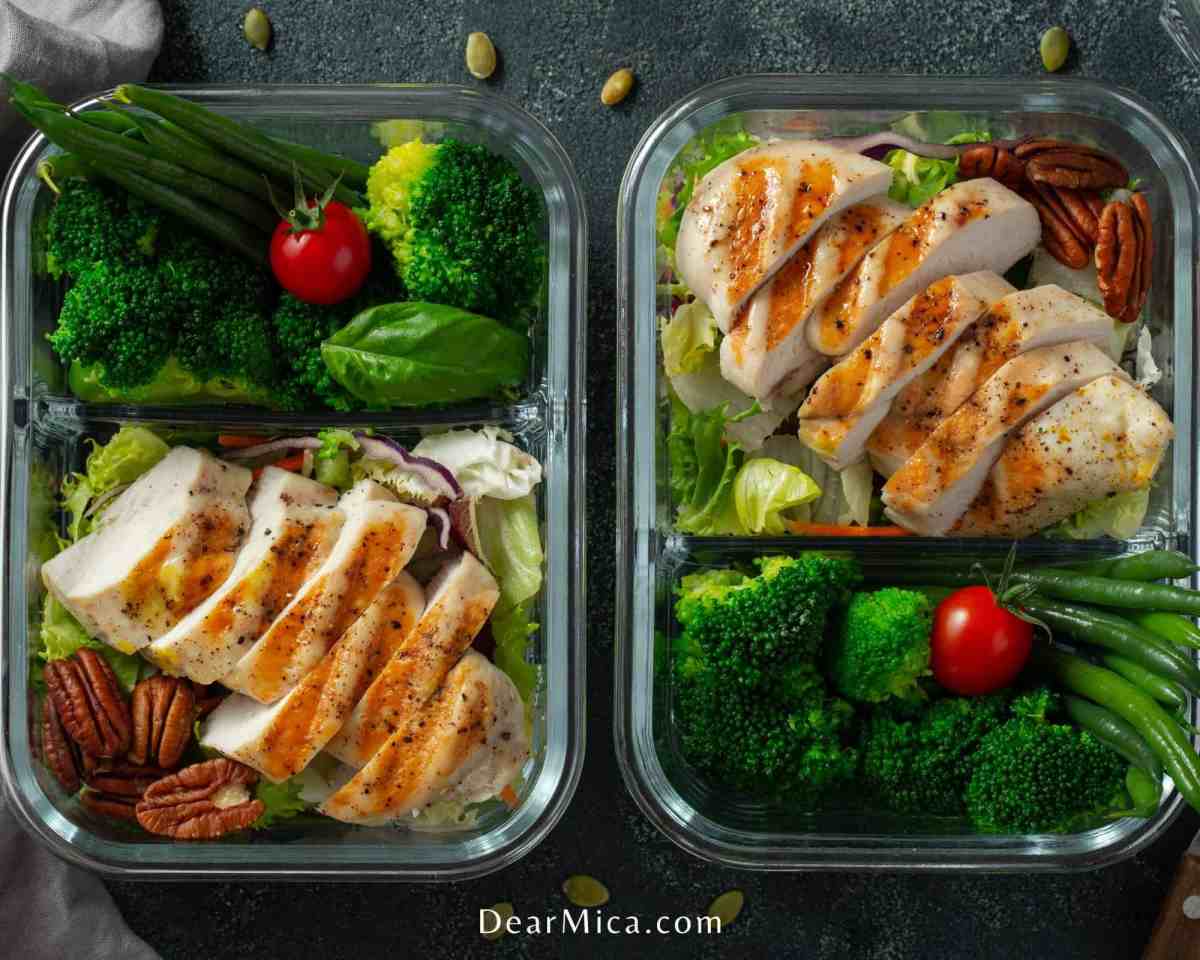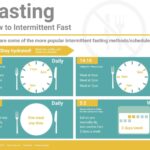Embark on a culinary journey into the heart of ketogenic living! This comprehensive guide unveils the secrets to crafting a flawless keto meal prep plan, transforming the often-daunting task into a streamlined and enjoyable process. Imagine a week stocked with delicious, nutritious meals, perfectly portioned and ready to conquer your hunger pangs without derailing your keto progress. We’ll navigate the fundamental principles of keto, design a personalized weekly menu, and equip you with foolproof recipes and time-saving strategies. Prepare to experience the transformative power of organized keto eating.
From understanding macronutrient ratios and selecting keto-friendly ingredients to mastering efficient meal prep techniques and optimizing storage solutions, this guide leaves no stone unturned. We’ll delve into detailed recipes, providing step-by-step instructions and macronutrient breakdowns, ensuring you maintain consistent nutritional intake. Discover the art of adapting recipes to your individual preferences, conquering cravings, and making ketogenic eating not just manageable, but a truly delightful experience.
Understanding Ketogenic Principles for Meal Prep

Successful keto meal prepping hinges on a thorough understanding of the diet’s core principles. By grasping the macronutrient ratios, the importance of net carbs, and the nutritional benefits of keto-friendly foods, you can craft meal plans that are both effective and enjoyable. This section will equip you with the foundational knowledge to create delicious and satisfying keto meals ahead of time.
Macronutrient Ratios in the Ketogenic Diet
The ketogenic diet centers around manipulating macronutrient intake to induce a metabolic state called ketosis. This state occurs when your body burns fat for energy instead of glucose (sugar). To achieve ketosis, you need to significantly reduce carbohydrate consumption while maintaining adequate protein and fat intake. The typical macronutrient ratio for a ketogenic diet is approximately 70-80% fat, 20-25% protein, and 5-10% carbohydrates. These percentages are guidelines; individual needs may vary based on factors such as activity level, body composition, and overall health goals. Precise ratios are best determined in consultation with a healthcare professional or registered dietitian.
The Significance of Net Carbs in Keto Meal Planning
Net carbs are crucial for keto meal planning. Net carbs represent the total carbohydrates minus fiber and sugar alcohols. Fiber is indigestible and doesn’t impact blood sugar levels significantly, while sugar alcohols have a lower glycemic index than other sugars. Therefore, focusing on net carbs provides a more accurate picture of the carbohydrate load affecting ketosis. Keeping your net carb intake within the recommended range (typically 20-50 grams per day) is essential for maintaining ketosis and achieving the desired metabolic benefits. Precise net carb limits should be determined based on individual needs and response.
Keto-Friendly Foods and Their Nutritional Benefits
A wide array of delicious and nutritious foods are compatible with a ketogenic diet. These foods offer a diverse range of vitamins, minerals, and antioxidants, contributing to overall health and well-being. Careful selection ensures that your keto meals are not only low in carbohydrates but also rich in essential nutrients.
Examples of keto-friendly foods include:
- Avocados: Rich in healthy monounsaturated fats, fiber, and potassium.
- Fatty fish (salmon, mackerel, tuna): Excellent sources of omega-3 fatty acids, protein, and vitamin D.
- Eggs: A complete protein source, providing essential amino acids, vitamins, and minerals.
- Nuts and seeds (almonds, walnuts, chia seeds, flax seeds): Packed with healthy fats, fiber, and various micronutrients.
- Olive oil: A source of monounsaturated fats, known for its heart-healthy properties.
- Leafy green vegetables (spinach, kale, lettuce): Low in carbs and rich in vitamins, minerals, and antioxidants.
- Berries (in moderation): Offer antioxidants and some fiber, but should be consumed in limited quantities due to their carbohydrate content.
Comparison of Healthy Fats Suitable for Keto
Choosing the right fats is paramount in a ketogenic diet. Different fats offer varying nutritional profiles and impact on health. The table below provides a comparison of several healthy fat options commonly used in ketogenic meal preparation.
| Fat Type | Source | Primary Fatty Acids | Health Benefits |
|---|---|---|---|
| Monounsaturated Fats | Olive oil, avocados, nuts | Oleic acid | Heart health, reduced inflammation |
| Polyunsaturated Fats | Fatty fish, flax seeds, chia seeds | Omega-3 and omega-6 fatty acids | Brain health, reduced inflammation, heart health |
| Saturated Fats | Coconut oil, butter, cheese | Palmitic acid, stearic acid | Energy source, may improve cholesterol levels (controversial) |
| Medium-Chain Triglycerides (MCTs) | Coconut oil, MCT oil | Caprylic acid, capric acid | Rapid energy source, may promote ketosis |
Optimizing Meal Prep for Time Efficiency
Efficient keto meal prepping isn’t about sacrificing flavor for speed; it’s about strategic planning and smart techniques that maximize your time while minimizing effort. By implementing a streamlined workflow and utilizing the right tools, you can transform your weekly meal preparation from a daunting chore into a manageable and even enjoyable process. This section will explore various time-saving strategies and methods to help you conquer your keto meal prep.
A well-structured keto meal prep plan hinges on efficient use of time. This involves strategic planning, smart shopping, and optimized cooking techniques. Imagine a vibrant kitchen, buzzing with activity, but controlled and focused, producing a week’s worth of delicious, healthy keto meals in a fraction of the time it would normally take. This is achievable through a systematic approach.
Workflow for Efficient Keto Meal Preparation
A well-defined workflow, from initial planning to final storage, is crucial for efficient keto meal prep. This process should be broken down into distinct, manageable stages to avoid feeling overwhelmed. Visualize the entire process as an assembly line, where each step smoothly transitions into the next, resulting in a finished product: delicious, healthy, and ready-to-eat keto meals.
The process begins with meticulous planning, which includes creating a weekly menu, generating a comprehensive shopping list, and scheduling dedicated prep time. Next comes the actual shopping trip, followed by prepping ingredients (chopping vegetables, measuring spices, etc.). The cooking stage involves batch cooking similar items together to maximize efficiency. Finally, the meals are portioned and stored appropriately to maintain freshness and quality.
Comparison of Batch Cooking and Individual Meal Prep
Batch cooking, where large quantities of similar components are prepared at once (like a big batch of roasted vegetables or cooked chicken), is incredibly time-efficient. Imagine a large roasting pan overflowing with colorful vegetables, all roasting simultaneously, releasing delicious aromas. This method minimizes cooking time compared to preparing individual meals separately. However, it requires more upfront preparation and larger storage containers.
Individual meal prepping, on the other hand, involves creating completely separate meals for each day. This method offers greater variety and flexibility but can be more time-consuming. Picture neatly arranged containers, each containing a perfectly portioned keto meal, ready for grab-and-go convenience. While this offers more variety, it may not be as time-effective as batch cooking.
Utilizing Kitchen Tools and Appliances
The right tools can significantly reduce meal prep time. A high-powered blender can quickly process ingredients for keto smoothies or sauces. A slow cooker allows for “set-it-and-forget-it” cooking, freeing up your time for other tasks. Imagine a slow cooker gently simmering a hearty keto stew, filling your kitchen with comforting aromas while you focus on other responsibilities. An Instant Pot offers speed and versatility, allowing you to pressure cook, slow cook, and even sauté, all in one appliance. These appliances can significantly reduce overall prep and cooking time.
Other helpful tools include a food processor for quick chopping and slicing, a mandoline slicer for uniform vegetable cuts, and a good quality set of knives for efficient preparation. Investing in these tools can dramatically improve your efficiency and make the entire process more enjoyable.
Storing and Reheating Keto Meals
Proper storage and reheating are crucial for maintaining the quality, nutritional value, and safety of your meticulously prepared keto meals. Ignoring these steps can lead to food spoilage, nutrient loss, and a less-than-pleasant eating experience. This section details the best practices to ensure your keto meal prep remains delicious and beneficial.
Appropriate Storage Containers and Techniques
Selecting the right containers is paramount. Glass containers are ideal for their inertness; they won’t leach chemicals into your food, unlike some plastics. Look for airtight glass containers with secure lids to prevent spills and maintain freshness. For single-serving portions, consider reusable silicone food containers, which are flexible, lightweight, and freezer-safe. Avoid using plastic containers that are not explicitly labeled as microwave-safe or freezer-safe, as they can leach chemicals or warp under high temperatures or low temperatures. Proper sealing is key to preventing freezer burn and maintaining texture. Ensure all containers are completely sealed before refrigeration or freezing.
Safe Reheating Methods
Reheating keto meals requires careful attention to prevent drying out or compromising the delicate balance of flavors and textures. The microwave is a quick option, but it can sometimes lead to uneven heating and a slightly rubbery texture in certain foods. For optimal results, consider using a low-power setting and covering the container with a microwave-safe lid or damp paper towel to trap moisture. Alternatively, reheating in a skillet or oven over low heat offers more control over the process and generally produces better results, especially for dishes with delicate proteins or vegetables. Gently warm the food, stirring occasionally, until heated through. Avoid overcooking, which can make the food dry and tough.
Preventing Food Spoilage and Extending Shelf Life
Proper storage significantly impacts the shelf life of your keto meal prep. Always allow food to cool completely before storing it in the refrigerator or freezer to prevent condensation and bacterial growth. Refrigerated keto meals are generally best consumed within 3-4 days. For longer storage, freezing is the preferred method. Freezing effectively halts bacterial growth, extending the shelf life to several months. Label and date all containers to track their age and ensure you consume the oldest meals first. Remember, FIFO (First In, First Out) is your friend when it comes to meal prepping.
Visual Guide to Optimal Storage Methods
Imagine a vibrant visual guide:
Scenario 1: Leftover Chicken and Broccoli: Picture a single serving of perfectly cooked chicken breast and steamed broccoli nestled snugly in a clear, rectangular glass container. The lid is firmly sealed, preventing any air from entering. This container is then placed in the refrigerator on a shelf, not directly against the back wall where the temperature is coldest, but rather somewhere in the middle for even cooling.
Scenario 2: Prepared Keto Salad: A colorful keto salad—think avocado, mixed greens, and shredded cheese—is stored in a round, airtight glass container. To prevent the greens from wilting, a paper towel is placed at the bottom of the container to absorb excess moisture. The container is refrigerated for maximum freshness.
Scenario 3: Frozen Keto Chili: A hearty portion of keto chili, rich with ground beef, peppers, and onions, is divided into individual freezer-safe bags. Each bag is completely sealed, pressing out excess air to prevent freezer burn. These are then stacked flat in the freezer to maximize space and ensure even freezing.
Scenario 4: Batch of Keto Muffins: Several delicious keto muffins, still warm from the oven, are allowed to cool completely on a wire rack. Once cooled, they are carefully placed in an airtight container, lined with parchment paper to prevent sticking. This container is stored in the pantry or a cool, dry place for up to 3-4 days. Alternatively, for longer storage, they can be individually wrapped in plastic wrap and frozen.
Mastering the art of keto meal prepping unlocks a world of convenience and consistency, allowing you to effortlessly maintain your ketogenic lifestyle. By understanding the core principles, planning meticulously, and utilizing efficient strategies, you’ll transform your relationship with food, embracing a healthier and more fulfilling approach to eating. This isn’t just about weight management; it’s about optimizing your energy levels, sharpening your focus, and experiencing the vibrant benefits of a well-structured ketogenic diet. So, take the reins of your keto journey and embark on a path toward lasting success.
Questions Often Asked
Can I freeze keto meals?
Yes, many keto meals freeze well. Choose freezer-safe containers and allow for expansion. Consider freezing individual portions for easier reheating.
How do I manage keto flu symptoms?
The keto flu, characterized by fatigue, headaches, and nausea, is often temporary. Ensure adequate electrolyte intake (sodium, potassium, magnesium) through broth, supplements, or electrolyte drinks.
What if I don’t like some keto-friendly foods?
Keto offers a wide variety of options. Experiment with different recipes and ingredients to find what you enjoy. Don’t be afraid to adapt recipes to your tastes.
Are all fats created equal on keto?
No. Prioritize healthy fats like avocados, olive oil, nuts, and seeds. Limit saturated and trans fats.


